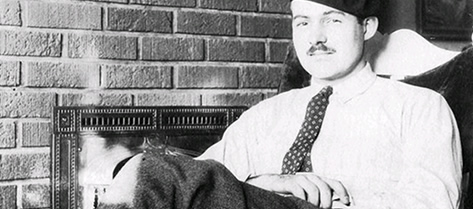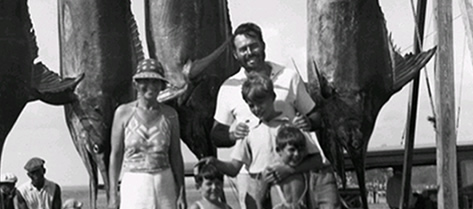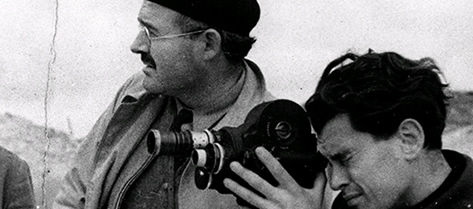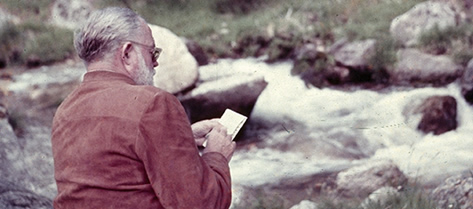As part of your Ernest Hemingway unit, we will be
reading and studying several of his stories.
Use this page to learn about each story, and return to it later as needed.
Here are some highlights from Hemingway's life.

Post-war Paris
After being wounded in World War I, Hemingway married Hadley Richardson in 1921. Working as a foreign correspondent, they spent significant time in Paris, where Hemingway joined a group of American ex-patriates and wrote the short story collection In Our Times and the novel, The Sun Also Rises.

Florida & Beyond
In 1927, Hemingway married Pauline Pfeiffer; they spent much of their time in Key West, Florida. During these years, Hemingway deep-sea fished in the Keys, went on safari in the Serengeti, and hunted in Wyoming. He would publish the short story collection Men Without Women and the World War I novel A Farewell to Arms.

The Spanish Civil War
During the later 1930s, Hemingway traveled to Spain to report the Spanish Civil War while his marriage suffered. This was not his first time in Spain; Hemingway's fascination with bull-fighting began in Pamplona in the 1920s. In 1940 he married journalist Martha Gellhorn, a month after publishing his novel For Whom the Bell Tolls.

The Great War & Cuba
During the early 1940s, Hemingway reported in Europe on World War II, including the D-Day invasion of Normandy. In 1946 he married his forth wife, Mary Welsh, and they moved to Cuba. Here he would write his most famous novel, The Old Man and the Sea. In 1959, they moved to Ketchum, Idaho, where two years later Hemingway took his own life.
Key aspects of Hemingway's writing style.
Journalistic Style
Hemingway is known for his short, blunt sentence structures. His first job was for a newspaper, The Kansas City Star, where he learned their Copy Style manual. Rules like "Use short sentences" and "Be positive, not negative" now make Hemingway's stories his own. Watch this video for more.
Iceberg Principle
Only one-eighth of an iceberg's mass is visible from the air; the rest of the mass is below the sea's surface. To Hemingway, a good writer can cut seven-eigths of his story and the story can still be told. For this reason, Hemingway's stories require readers to read between the lines.
The Hemingway Hero
Because Hemingway's protagonists often share similar qualities, critics refer to the Hemingway hero as one who experiences a moment of truth where the hero faces life or death, shows grace under pressure (fancy phrase for courage) and may end up destroyed but not defeated.